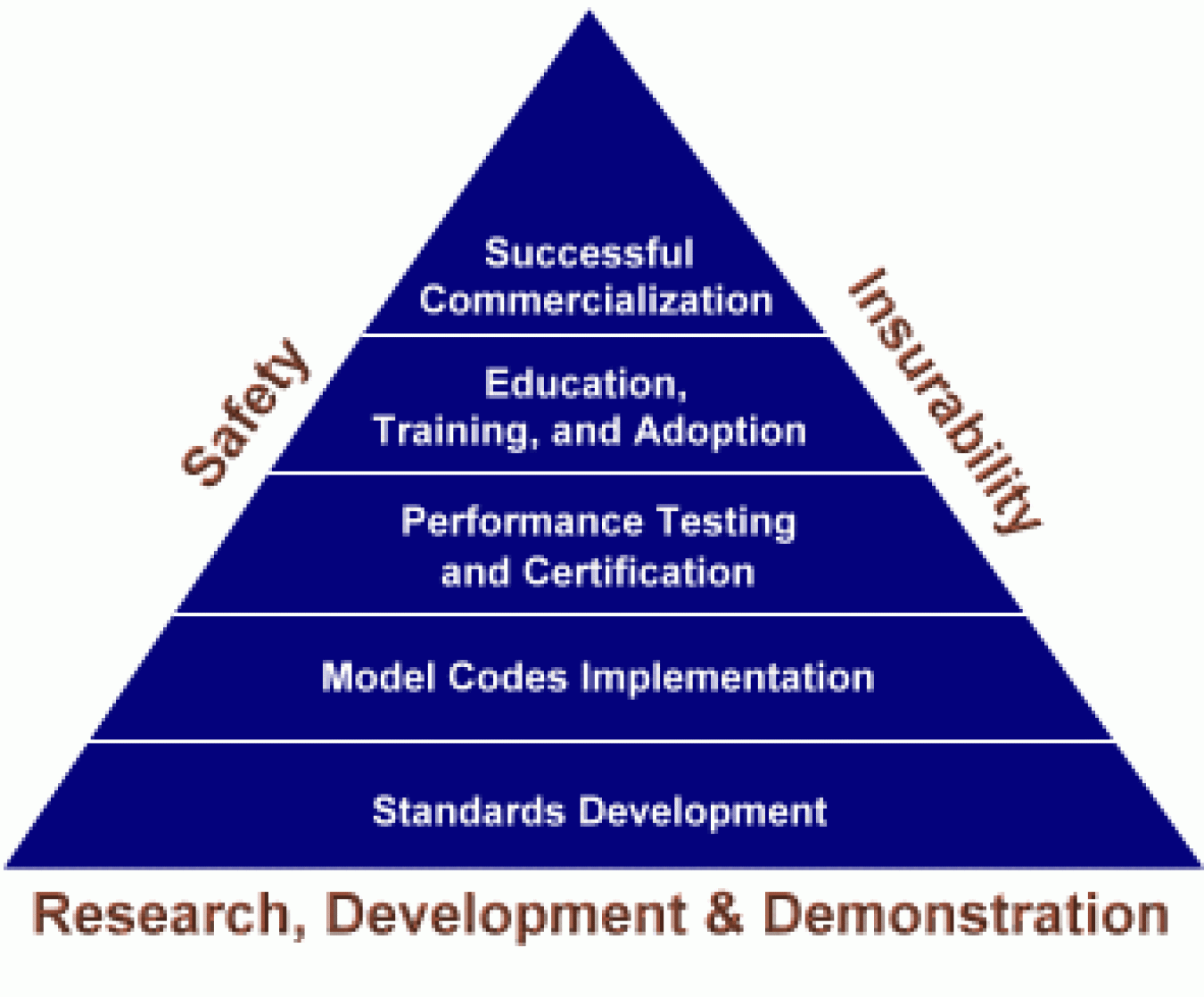
The U.S. Department of Energy's (DOE's) hydrogen safety R&D activities are aimed at developing sensors to detect hydrogen leaks in hydrogen and fuel cell systems. DOE's codes and standards activities are focused on coordinating and accelerating the efforts of major standards and model code development organizations and regulatory agencies so the required standards, codes, and regulations for hydrogen technologies can be prepared and adopted to facilitate commercial applications of these technologies in a timely manner.
The safety pyramid shows that several steps, from research and development through establishing design and performance standards, are necessary to reach the ultimate goal of insurable commercial systems. Research and development of hydrogen and fuel cell systems is the most important part of the safety pyramid because it provides the critical data needed to write performance standards.
To learn more about DOE's safety, codes and standards activities, see:
- Hydrogen safety R&D projects
- Project safety oversight activities
- Codes and standards activities
- Safety Planning for Hydrogen and Fuel Cell Projects, updated January 2020.
Additional DOE safety, codes and standards activities include:

